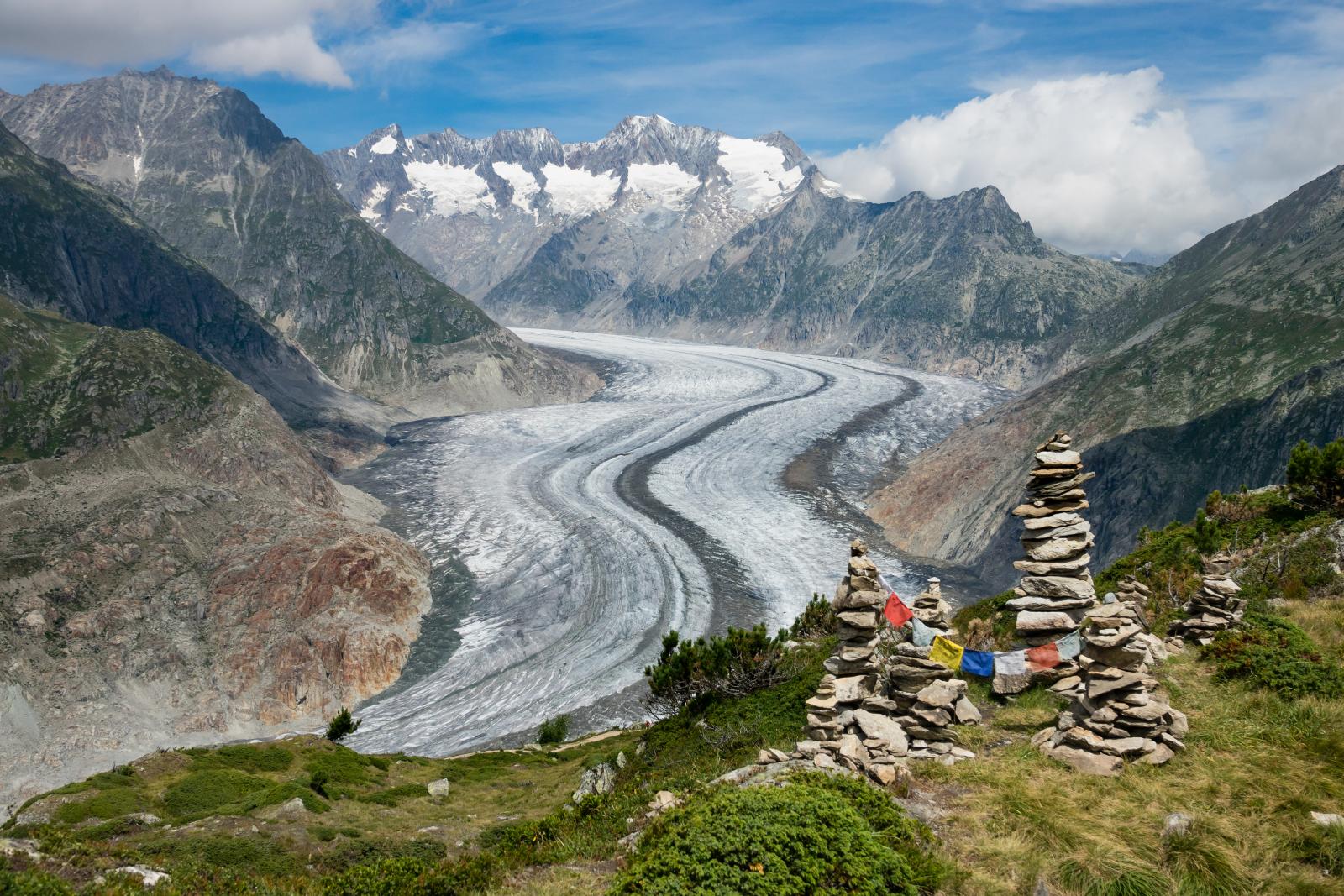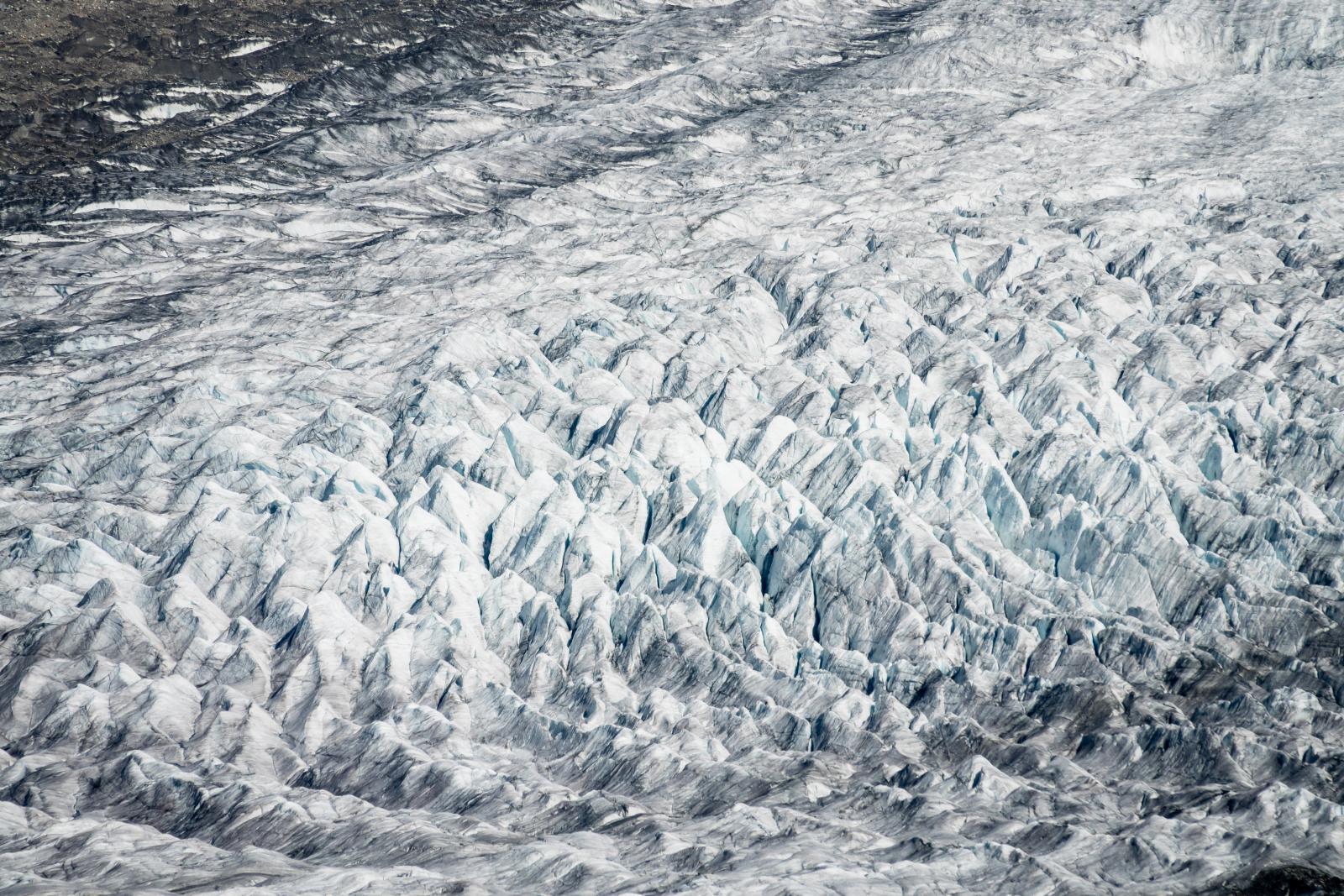- Trips
- Tour Calendar
- About Our Tours
- Plan a Trip
- Book a Trip
- About Us
- Contact Us


 A Brief History of Glaciers in the Alps
A Brief History of Glaciers in the AlpsOn a hiking tour in the Alps, encountering glaciers is almost a daily experience. But the glaciers we see today are just a tiny remnant of what once existed. At the peak of the last ice age, about 18,000 year ago, glaciers completely covered the Swiss plateau and most of the Alps. As the glaciers retreated, their remnants were left only in the high mountain areas. There have been numerous periods of glacial advance and retreat since the end of the last ice age. For example, wood samples recently found at the leading edge of a Swiss glacier indicate that 4000 years ago the Alps were nearly glacier free. Even during Roman times glaciers were shorter than they are today. Glaciers grew during the "Little Ice Age" in the 15th century and reached their maximum recent extension in the mid 19th century. Today, Switzerland holds the highest concentration of glaciers in the Alps. There are 122 glaciers in Switzerland and 26% of Switzerland's fresh water can be found in its glaciers--an astoundingly large proportion, considering the number of lakes and rivers that cover Switzerland.
The largest of those glacier is the Aletsch Glacier (German: Aletschgletscher), with a length of about 23 km and covering about 120 km ² (about 45 sq. mi.). Located in the Bernese Alps in the canton of Valais, it flows south into the Rhône valley. At the top of the Aletsch Glacier, in a glacial bowl know as the Konkordiaplatz, the glacier has its maximum depth of 900 meters (2953 ft). The Aletsch Glacier is a favorite feature on all of our tours in the Jungfrau region. Along with the Fischer and Aar Glaciers the Jungfrau region became a UNESCO World Heritage Site in 2001. The Aletsch Glacier is a popular feature of our Best of the Swiss Alps and Exploring the Jungfrau tours. Since 1880 the Aletsch Glacier has retreated over 8500 feet, but it's still over 14 miles long and measures over 3300 feet at its thickest point. In fact, there is so much water in the Aletsch Glacier that if you melted it down, you could give every person on earth a liter of water a day for an entire year.
The Gorner Glacier (German: Gornergletscher) is located to the west side of the Monte Rosa massif near the town of Zermatt. At 14 km long and 1 to 1.5 km wide it is the second largest glacier system in the Alps. Some of the smaller glaciers that feed into the Gorner Glacier include the Grenzgletscher, Zwillingsgletscher, Schwarzegletscher, and the Breithorngletscher. Additionally the Theodulgletscher and the Monte Rosa are considered tributaries but are no longer connected. The Gorner Glacier is the source of the Gornera river which flows into Zermatt, although most of the water is diverted into the Grande Dixence hydroelectric system and is pumped into Lac des Dix. Views of the Gorner Glacier, and access to the glacier are possible from the Gornergrat, a mountain ridge near Zermatt. A visit to the Gorner Glacier is a popular feature of our Haute Route and Best of the Swiss Alps tours.
The Moiry Glaicer is located at the head of the Val de Moiry on the west side of the immense  Val d'Anniviers in the canton of Valais. It's easily accessible by bus and the Cabane de Moiry offers the ideal location for spending the night in a glacier-view room. The Moiry Glacier is best known for its spectacular and scenic icefalls. It's also a dramatic conclusion to Day 7 on the Chamonix-Zermatt Haute Route.
Val d'Anniviers in the canton of Valais. It's easily accessible by bus and the Cabane de Moiry offers the ideal location for spending the night in a glacier-view room. The Moiry Glacier is best known for its spectacular and scenic icefalls. It's also a dramatic conclusion to Day 7 on the Chamonix-Zermatt Haute Route.
The two Grindelwald glaciers, the Upper Grindelwald Glacier and Lower Grindelwald Glacier (German: Oberer Grindelwaldgletscher and Unterer Grindelwaldgletscher) with tongues at about 1400 meters above sea level are the two lowest elevation glaciers in the Alps. The Lower Grindelwald Glacier has a length of about 6 km and covers an area of nearly 10 km ². The Upper Grindelwald Glacier feeds from a snowfield between the Schreckhorn and the Wetterhorn. A visit to the gorge of one or both glaciers is included on our Exploring the Jungfrau tour.